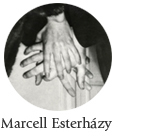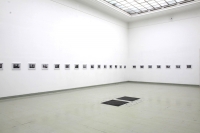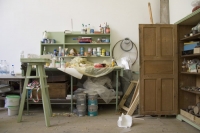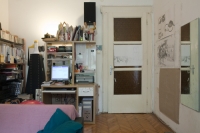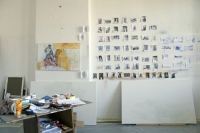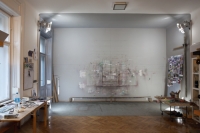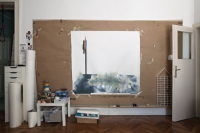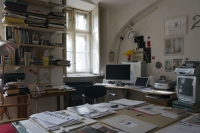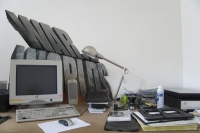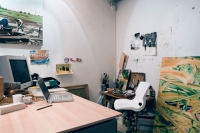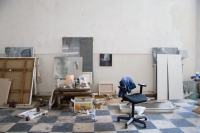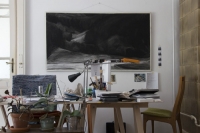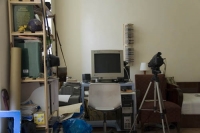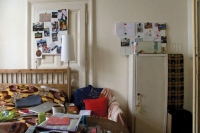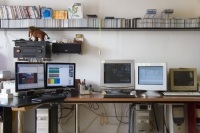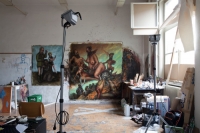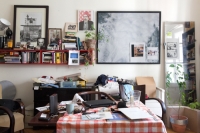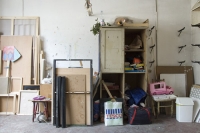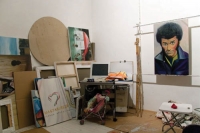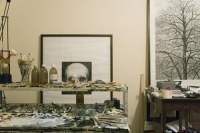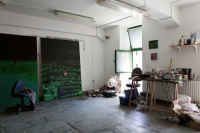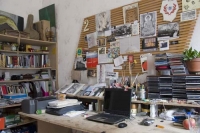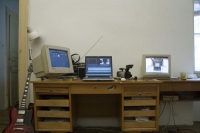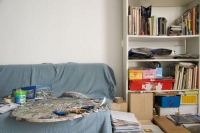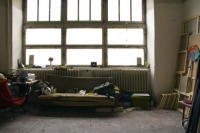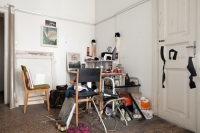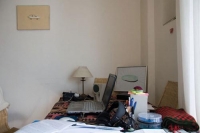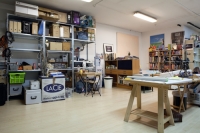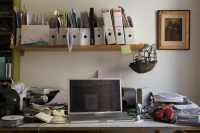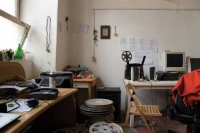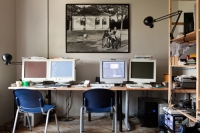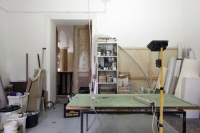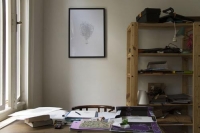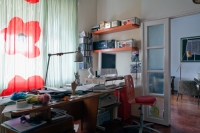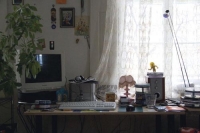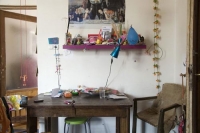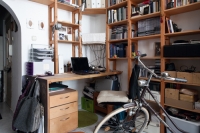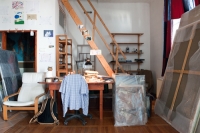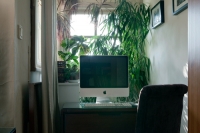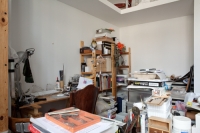atelier_bp (2007-2010), photo, 30 x 40 cm
exhibition view at Műcsarnok/Kunsthalle (AVIVA Art Award), Budapest, 2010
Esterházy has been working on atelier_bp since 2007, a photo series that presents the studios of artists who work in Budapest. Unlike in customary atelier photos, the artists are now absent, only the environments are shown in which they work. More often than not what we see are not classic studios but living rooms or bedrooms converted for the new function out of necessity. These spaces keep changing, so the photos are interesting documents, both for the owner and the viewer, of the conditions of a given time.
“It is however not the subject that fills Esterházy’s series with meaning but the genre of photography and its contemporary interpretation. With the gesture of photography, the maker of the image simply appropriates others’ art-not in the sense of stealing but in the postmodern sense of transfer. The atelier suddenly finds itself in the exhibition room: the place of production emerges in the place of presentation. Esterházy appropriates others’ environments, work and subjective impressions, and presents them in the gallery as his own work. And he presents not one but all, together, in a potentially endless series. His photos of ateliers are photos of collections, in the manner of that champion of appropriation, Louise Lawler, who built a series from images of museum collections ...
(József Mélyi: “Concealing Art” Élet és Irodalom, 52:5).
The photos are both very personal – because the objects a person lives among always reveal much about their owner – and reserved, thanks to the absence of persons. They also provide a chance for an interesting game: knowing the artworks, can you match the artists and the places where the works were realized?
